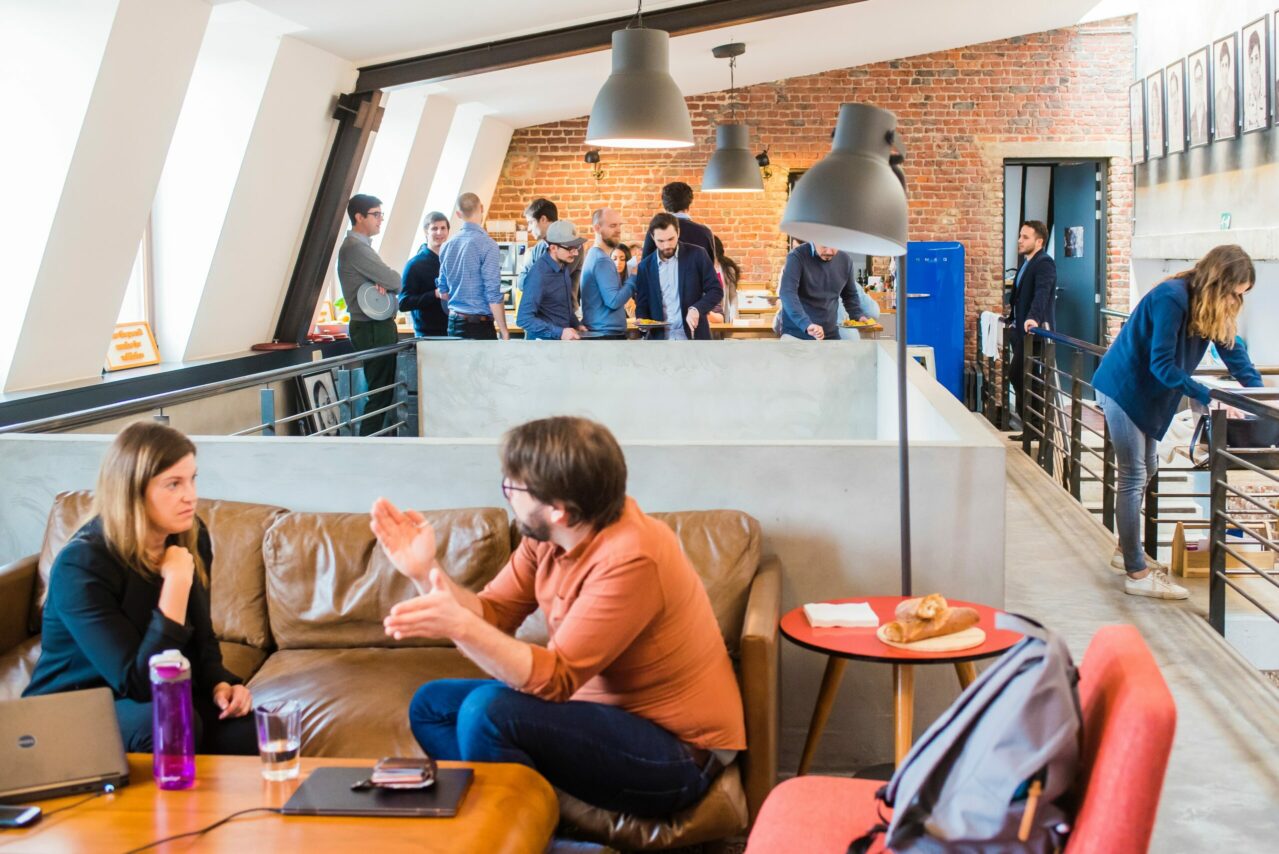Webster’s dictionary defines the word culture as the integrated pattern of human behavior that includes thought, speech, action, and artifacts and depends on man’s capacity for learning and transmitting knowledge to succeeding generations. Dr. Stephen Covey, says that culture is the shared value system of people as manifest in their behavior. The Accounting office of the US Government states that culture is the underlying assumptions, beliefs, attitudes, and expectations shared by an organization. No matter how you define it, your organizational culture is clear to everyone who walks through the front door. And in the current staffing environment, it also determines who walks out.
There are four types of organizational culture:
THE COMPETITIVE CULTURE
This culture is fast-moving and highly competitive. And there is a constant drive to constantly outdo what you’ve done before. Much of the focus is on financial growth and winning work. Examples include brokerage firms, law firms, and construction companies. Such cultures are often stressful environments in which to operate. Only the strong survive.
THE SERVICE CULTURE
In service cultures, pleasing the customer comes first. Decisions are always made with the client’s view in mind. How well the company serves its customer is seen as a differentiator. As such, service cultures constantly strive to make things “user friendly” in order to create customer loyalty. For example, the Ritz-Carlton, American Express “Platinum” Card, and LL Bean.
THE INNOVATIVE CULTURE
Companies that rely on innovation for their livelihood incessantly strive to attract new customers (and wow current customers) with leading-edge technologies and approaches. For example, an organization with an innovative culture, values creativity above all else. Innovative cultures have a big appetite for risk-taking, and, as such, the work environment in an innovative culture is often high-energy. Such companies as Pixar, Apple, and Gore-Tex fall into this category.
THE BUREAUCRATIC CULTURE
Bureaucratic cultures value consistency and process adherence. In such cultures, predictability is valued more than creativity, and following “the rules” is more important than striving for improvements. The average employee tenure in bureaucratic cultures is much higher than in the other cultures, often because in such cultures “seniority rules.” Public services and government agencies fit into this category.
“Organizational cultures are created in part by leaders, and one of the most decisive functions of leadership is the creation, the management, and sometimes even the destruction of culture.”
From Organizational Culture and Leadership, by Edgar Schein
By design, each of these cultures is in place to support the very specific nature of each industry. But what happens when an organization with a bureaucratic culture needs to innovate quickly. Or when the staffing issues that are deeply affecting our service industry shift pleasing the customer into a secondary position. The nature of work has changed dramatically over the last two years, and companies have had to take a look at long-ingrained cultures and begin to influence change. For years Giant Leap has regularly led workshops on understanding and leading culture and here are a few suggestions:
-
Don’t oversimplify culture.
Don’t confuse it with the company’s climate or stated philosophy. Culture underlies and largely determines these other variables. Trying to change the philosophy or climate, however, without first understanding the deeper underlying culture will be a futile effort.
-
Don’t think of it as “touchy-feely.”
The impact of culture goes far beyond the human element of the organization and influences the organization’s basic mission and goals.
-
Don’t assume that you can control the culture as you can control many other aspects of the company.
Culture is influenced by everyone within the organization, and by external realities outside the organization. Culture may end up controlling the leader rather than being controlled by him or her.
-
Don’t assume that all the aspects of an organization’s culture are important.
Some elements of an organization’s culture may have little impact on its functioning, but the leader must distinguish which elements are important, and focus on those.
All organizations have worked harder than ever these last few years. It has been a daily struggle to meet the changing requirements, shortages, and overall disruption. In addition to the cultures above, it is time to introduce a new culture of rest. This doesn’t mean laziness or lack of drive or motivation. It means a well-earned break after a period of hard work. A reward at the end of a struggle. A vacation shouldn’t be the only time you rest. Encourage your team to rest throughout the day as well. Frequent breaks during the workday not only improve productivity but also improve overall morale.
So take a look at the culture of your organization. How might you be influencing the culture that surrounds your company’s mission and goals?
Together with a culture of work, there must be a culture of leisure as gratification. To put it another way: People who work must take the time to relax, to be with their families, to enjoy themselves, read, listen to music, play a sport. ~Pope Francis
Photo by Proxyclick Visitor Management System on Unsplash.



